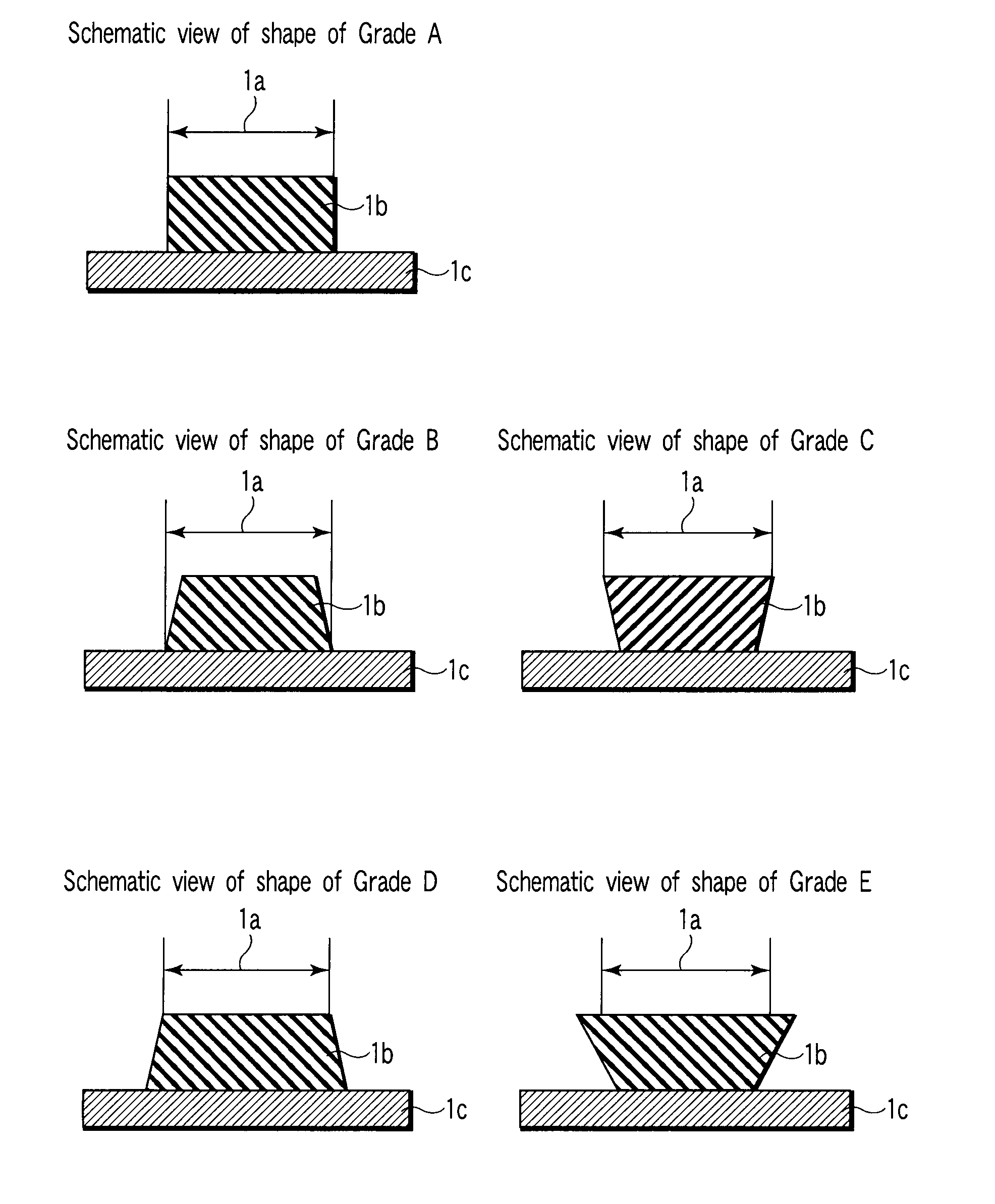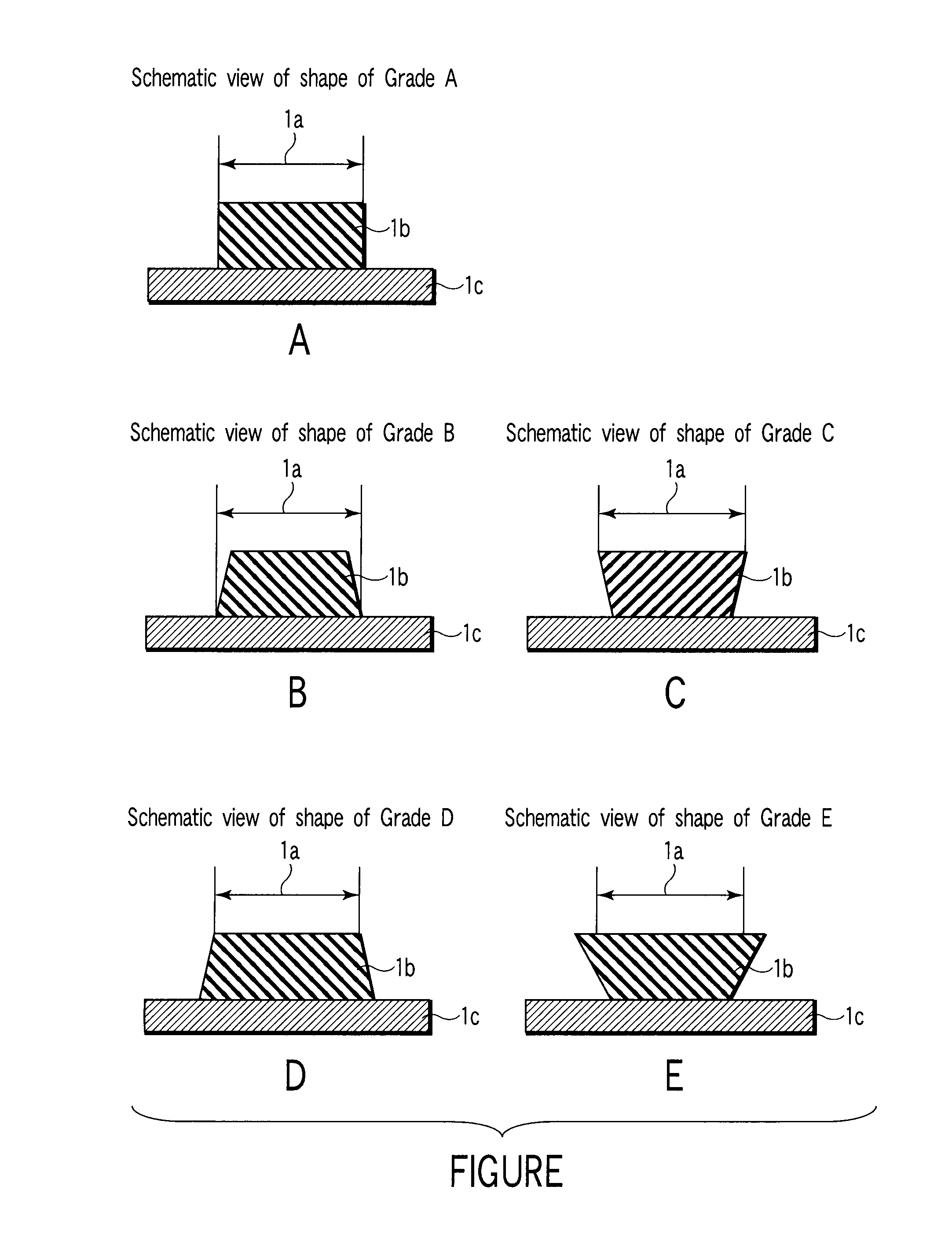Photocurable and thermosetting resin composition, cured product thereof, and printed circuit board
a thermosetting resin and composition technology, applied in the direction of photosensitive materials, instruments, photomechanical apparatuses, etc., can solve the problems of high rate of photopolymerization, insufficient deep and surface curability, and large time-consuming direct imaging exposure, etc., to achieve excellent thermal stability, high photopolymerization capability, and sufficient deep curability
- Summary
- Abstract
- Description
- Claims
- Application Information
AI Technical Summary
Benefits of technology
Problems solved by technology
Method used
Image
Examples
examples
[0103]The present invention will be further illustrated with reference to the following Examples and Comparative Examples, but will not be limited to the following Examples.
synthesis example
[0104]Into a 2-liter separable flask equipped with a stirrer, a thermometer, a reflux condenser, a dropping funnel, and a nitrogen introduction tube, 660 g of a cresol novolak-type epoxy resin (EOCN-104S, manufactured by Nippon Kayaku Co., Ltd., softening point: 92° C., epoxy equivalent weight: 220), 421.3 g of carbitol acetate, and 180.6 g of solvent naphtha were charged. The mixture was dissolved under heating and stirring at 90° C. The solution was then cooled to 60° C., and 216 g of acrylic acid, 4.0 g of triphenyl phosphine, and 1.3 g of methyl hydroquinone were added to the solution, and allowed to react at 100° C. for 12 hours thereby forming a reaction product having an acid value of 0.2 mg KOH / g. The reaction product was mixed with 241.7 g of tetrahydrophthalic anhydride. The mixture was heated to 90° C. and allowed to react for 6 hours thereby forming a solution of a carboxylic resin (A) having an acid value of 50 mg KOH / g, a double bond equivalent weight (g weight of the ...
specific example
[0105]The resin solution obtained in Synthetic Example 1 was mixed with the components listed in Tables 1 and 2 at the ratios listed in the tables (in parts by weight). The mixture was preliminarily mixed with a stirrer, and then kneaded with a three-roll mill thereby producing a photosensitive resin composition for solder resist. The degree of dispersion of the obtained photosensitive resin composition was determined by the grain size measurement with a grindometer manufactured by ERICHSEN GmbH, and was found to be 15 μm or less.
[0106]Examples 1 to 8 in Tables 1 and 2 are the compositions of the present invention. Comparative Examples 1 and 4 contain no phosphine oxide-based photopolymerization initiator, Comparative Examples 2 and 5 contain no sulfur compound, and Comparative Example 3 contains a sulfur compound different from the sulfur compound according to the present invention. These Comparative Examples are outside the scope of the present invention.
TABLE 1Examples and Compar...
PUM
| Property | Measurement | Unit |
|---|---|---|
| Thickness | aaaaa | aaaaa |
| Wavelength | aaaaa | aaaaa |
| Photocurable | aaaaa | aaaaa |
Abstract
Description
Claims
Application Information
 Login to View More
Login to View More - R&D
- Intellectual Property
- Life Sciences
- Materials
- Tech Scout
- Unparalleled Data Quality
- Higher Quality Content
- 60% Fewer Hallucinations
Browse by: Latest US Patents, China's latest patents, Technical Efficacy Thesaurus, Application Domain, Technology Topic, Popular Technical Reports.
© 2025 PatSnap. All rights reserved.Legal|Privacy policy|Modern Slavery Act Transparency Statement|Sitemap|About US| Contact US: help@patsnap.com



